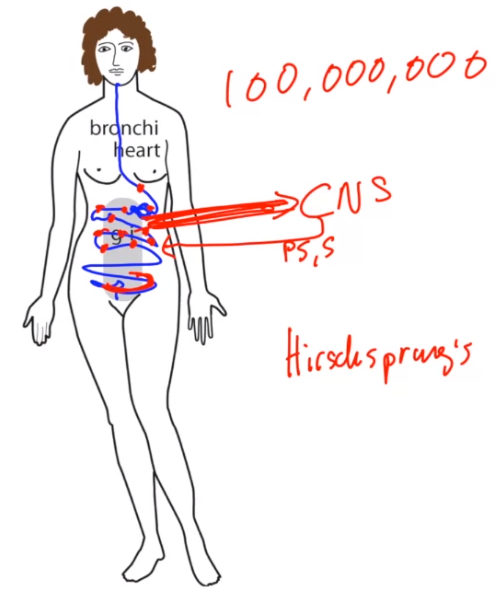I. Introduction

- The lecture starts by acknowledging the autonomic nervous system’s three divisions: sympathetic, parasympathetic, and enteric.
- We will focus on the enteric nervous system (ENS), found throughout vertebrates.
II. Structure and Function of the ENS
- The ENS lines the digestive tract, from the esophagus to the anus.
- It contains approximately 100 million neurons organized into two plexuses:
- Myenteric plexus: Responsible for peristalsis, the movement of food through the digestive tract.
- Submucosal plexus: Responsible for secretion, controlling the water content of feces.
- The ENS functions automatically, meaning we don’t consciously control digestion.
III. Clinical Example: Hirschsprung’s Disease
- This disease is caused by a section of the GI tract lacking enteric ganglia (neurons), leading to a blockage.
- Symptoms include constipation and an enlarged colon (megacolon).
- Treatment involves surgically replacing the affected section with a healthy, innervated portion.
IV. The Gut-Brain Connection
- While the ENS operates autonomously, it interacts with the central nervous system (CNS) through:
- Afferent pathways: Sending information about the digestive state (fullness, hunger, etc.) to the CNS.
- Efferent pathways: Receiving information from the CNS (via sympathetic and parasympathetic nerves) affecting mood and GI function (e.g., nervousness affecting bowel movements).
- This bidirectional communication between the gut and brain highlights the mind-body connection.
V. Conclusion
- The ENS is a fascinating example of how the body’s physical state can influence our emotions and vice versa.
- Understanding this connection is crucial in various health contexts, including the link between psychiatric disorders and gastrointestinal issues.